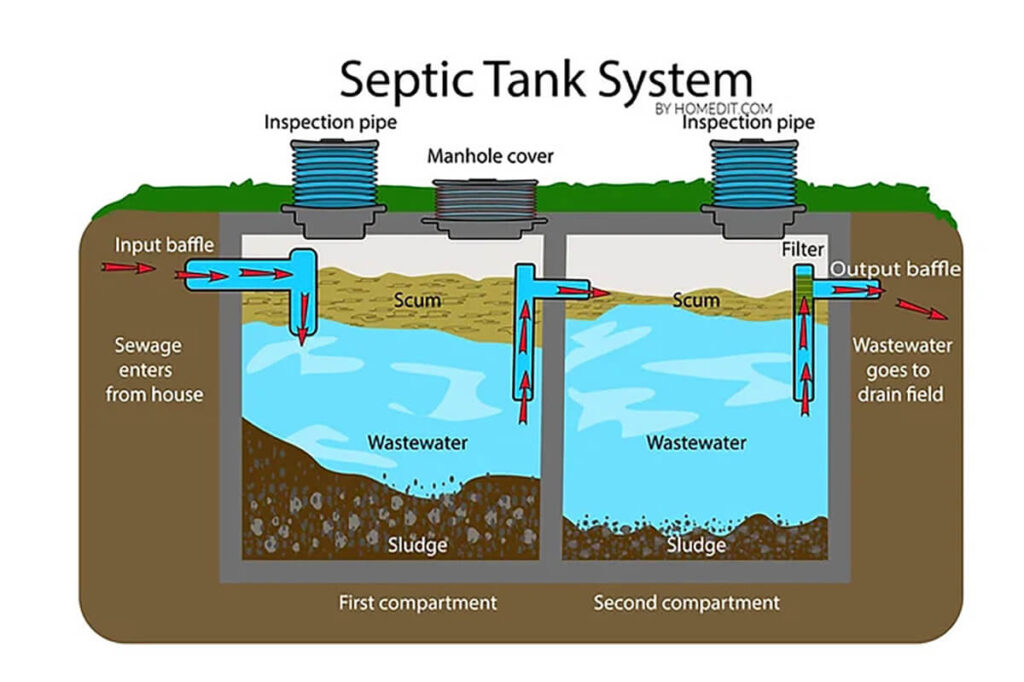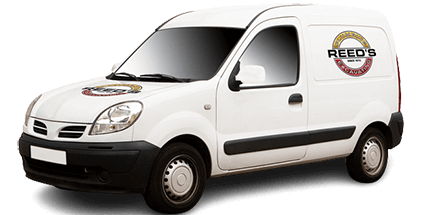If you’ve grown up with household septic tanks your entire life OR you’re new to septic tank life, it’s important to learn how to care for your septic system.
Because it’s out of sight, it’s often out of mind – until there’s a problem.
Learning about your septic tank is just one of the many things you can do to help keep your entire sewer system working properly for years to come. These five tips will help you get started with keeping your home’s septic system up and running.
Septic System Basics
The first part of taking care of your septic tank is knowing how your septic system works and how to take care of your septic system.
Septic systems are made up of two main parts: the septic tank and the drain field or leach field. Your home is connected to the septic tank through the plumbing. Each time you put something down your kitchen sink, bathroom sink, tub, shower, washing machine, garbage disposal, or any other drain in your house, it flows into the septic tank buried in your yard.
Once the household water waste reaches the septic tank, bacteria get to work breaking down any of the solids that sink to the bottom of the tank. This is often called the sludge layer inside your tank.

The top layer of your septic tank is made up of lighter solids like soap scum and grease that get washed down the drain. These still need to be broken down a bit before leaving the septic tank but it doesn’t take as long as solids in the sludge layer.
In between those two layers of sludge and scum is where the liquid stays inside your septic tank. The liquid leaves your septic tank through drain pipes that have small holes in them to allow the water to drain out into the drain field to be absorbed into the soil.
The average household septic system is based on the size of your home when the septic system was installed. If you do major renovations to your home to increase the square footage, you may need to add an additional septic tank or replace the existing one with something larger.
Location Matters
Whether you’re putting in a new septic system or making plans for a remodel of your septic system or home, the location of your septic tank and drain field matter for many different reasons.
Property Usage
Your septic tank needs to be placed in a location where it really won’t be bothered too much. To keep the tank and pipes from cracking, avoid driving vehicles or heavy equipment over your septic tank. Having large animals like cattle continually walk over it can also be damaging.
Landscaping
Keep in mind the location of your septic system as you’re doing landscaping and as you plant trees. Even small tree roots can get into the pipes and cause cracks and damage that you might not know about until it’s too late.
Having your septic system in a location that’s easily accessible for maintenance and repairs can also be very helpful when it comes to inspections and having your septic tank pumped.
Drainfield
Knowing the location of your drain field for your septic tank is helpful. Diverting other runoff water away from your drain field will help to keep water properly flowing out of your septic tank because the ground isn’t overly saturated. Look at rainwater drainage systems if you live in an area that receives a lot of rainfall to help keep that water out of your drain field.
Keep the drain field location in mind when you’re emptying things like a hot tub or pool. Do not ever drain hot tubs near a drainage system. Adding that much water to the soil will make it very hard for the water to be able to flow out of your septic tank.
More Isn’t Better
It might sound like a great idea to tackle all your chores one day of the week, but it can really disrupt your septic system. Your septic system is set up to handle average indoor water use for the square footage of your house. Running your washing machine to do all of your laundry on one day of the week when you have a septic system can overwhelm your septic tank.
Because your septic tank needs a level of healthy bacteria to function properly, adding all that water to it all at once can really have a negative effect on the bacteria living in your septic tank. Washing machines can add a lot of water into your septic tank and wash away the good bacteria living in the tank.
Find a Trusted Septic Tank Expert
Call Reed’s today for a free consultation for any of your septic tank needs. We’re available to help with all of your septic and plumbing needs for your home or business.
One of our friendly and professional team members will be able to answer your questions. Your septic service professional will go over your septic system with you so you can learn about the normal sludge and scum levels for your septic system, when you should have your system pumped, and even where it’s located if you’re not sure about that.





